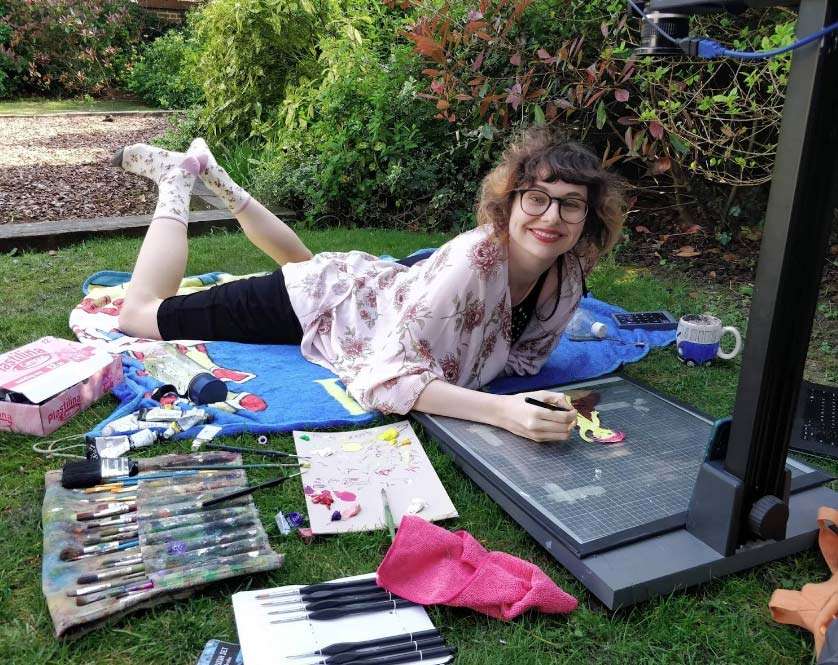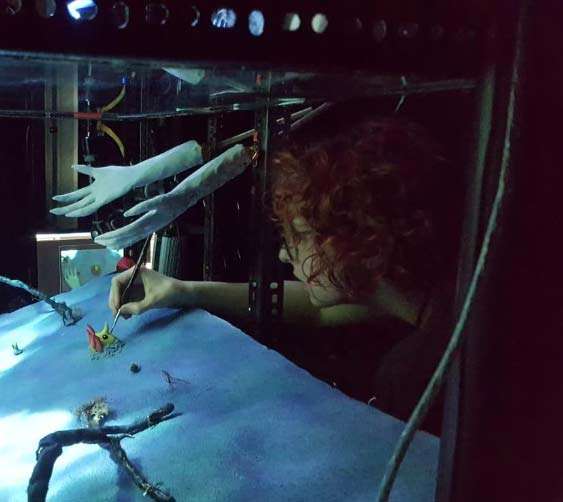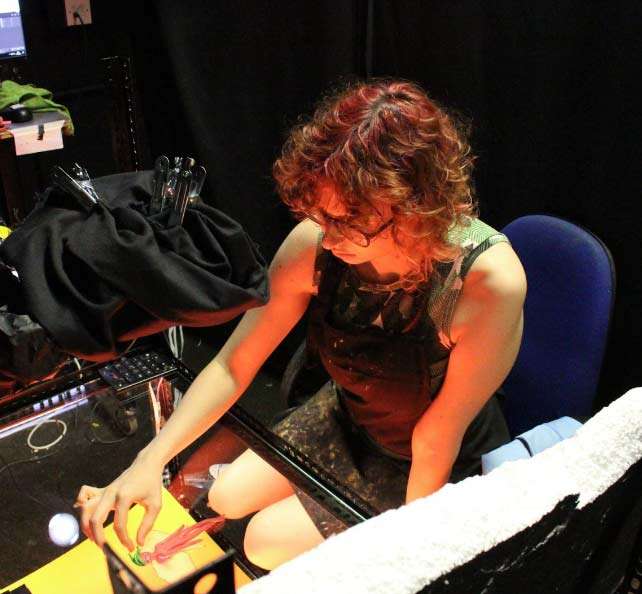Meet Our Director, Lina Kalcheva!
Lina is an award-winning animation director from Bulgaria, currently based in England, and a recent graduate from the UK’s National Film and Television School. Coming from a painting background, Lina has studied Fine Art, Theatre, Film and Animation. Lina works in 2D, multiplane, stop-motion and in-between; using combinations of drawing, painting, clay and found natural materials. Her films are inspired by mythology, nature, the occult, identity and human relationships. Her NFTS graduation film Other Half premiered in Cannes Festival’s Cinéfondation selection and has screened in over 60 film festivals, including Chicago IFF, Rhode Island FF, Hollyshorts and Interfilm Berlin, winning 13 awards, notably the Anima’t Award for Best Short Animation at the Oscar-qualifying Sitges Film Festival; as well receiving 20 other nominations among which the British Animation Awards, the Melies d’Argent and the MPSE Golden Reel Awards. At the moment Lina is co-directing the short VR game Tea is Served and is finishing development on her next short animation Dawn Chorus.

How do you approach storytelling in your work, and what are some of the key elements that you think make a story successful?
I think what excites me about storytelling is pushing things to the extreme – characters who confront their limits and boundaries, situations that reach a boiling point. Particularly in animation I personally like when that crosses into absurdity or surrealism – partially because it’s a fun playful approach for a story to address serious topics without taking itself to seriously, but also because I think fantasy, the abstract and the absurd remove us just far enough from reality to be able to let us see things from a new point of view. At the same time I feel like I always want to have a personal connection to some element of the story, if I’m the one to be telling it – even though I have never really made anything remotely autobiographical, and I tend to gravitate towards things pretty removed from reality – I feel like I always need to have a really clear point of view in the themes, characters and stories I work with that feels unique to me.
How do you work with your team to bring your vision to life, and what strategies have you found to be most effective?
Working with a team is what really made me want to go from being an animator from being a director. I find it very enriching and fulfilling to have a shared vision for a project and for everyone to bring it to life together. I like to get everyone from the team involved as soon as there’s a draft of the script I’m happy with, and really get everyone’s feedback as move towards finalising the story. I love sending everyone films, art, music, graphic novels or anything that could be an inspiration for the project, even if it’s not directly related to their department. It’s really useful for me to get their take on things so early on in development so that I’m considering all these elements as things are being pieced together. I try to keep this going throughout all the stages of production, and I’ve found the close relationships I’ve made with people I worked with have made for films I’ve been the most proud of. In general filmmaking is a very collaborative process and I feel like so much more can be achieved when everyone has the space to contribute with their vision of things – and I always feel really lucky when people from the team share my enthusiasm for what we’re making.

How do you keep yourself inspired and motivated creatively?
One good thing about animation being such a slow process is that it gives me lots of time to think of new things – and I’ve found I get the most ideas while I’m already working on a project. I find it productive not to get too stuck in the same routine while I’m working – so trying new styles or techniques, particularly when they’re more tactile for example, keeps me really engaged with what I do in long production periods. It can be really demotivating to just be on autopilot doing the same thing over and over again, even though in a way it can be more comfortable to feel really confident in this one way of doing things – but I find that creatively it doesn’t really stimulate me and things begin to feel more like a chore. It’s definitely more stressful to be figuring out new things as you go, but I find it really fulfilling. In the same way, I think that’s also why that’s the time I usually end up thinking of new stories – just as a way of stepping out of the story that’s been on my mind of months, or years, and think of something new.
Can you speak to any specific themes or motifs that you frequently explore in your work, and what draws you to those ideas?
I really like genre films, particularly fantasy, sci fi and horror; and I also really like characters and personal stories. I often combine those things I create stories where a character’s internal struggle manifests as something surreal or supernatural that they have to overcome. I love mythology, nature and occultism and the places they intersect, and how they can be used as shorthand for really personal, emotional stories. Visually, I’m also really drawn to that kind of imagery, in particular, organic shapes, fantastical natural landscapes, lots of colour. In terms of design, I really like looking for inspiration in specific art movements and paintings and sculptures that could feel in tune with the story, and I like referencing them in the environments for my films. I also like working with found or natural materials if they’re at all relevant to the story, partially because I like the play with scale when I use a real object in the context of animation, as well as how the texture is emphasised because of this – I think there’s something really cool about seeing something familiar in a new way. I try to make things playful and have fun with little details, whether visually, narratively or atmospherically to some extent, even if the story is a bit darker or more serious.
How do you approach the process of character development, and what are some of the key factors that you consider when creating new characters?
I try to make the core quality of a character something I can either relate to, or something I have observed very thoroughly in people – but definitely something I feel I know very well. I wouldn’t say I base any of my characters on specific people or on myself, but there’s usually some kind of nugget of someone I know in there, that I then inflate into something fictional that serves the story. I think I always think of a character’s flaws first, since that’s where most of the conflict lies, and structure things around that – but I try to make them likeable too in one way or another, even if they’re actually the worst. I like for people be somehow reminded of a very amplified version of someone they know when they see my films – the characters might be crazy or strange, but they still feel real. I also really like characters that are obsessive or insecure, or ones that have a compulsion for something that gets them into trouble.

Can you speak to any particular challenges or opportunities that arise when working with animation as opposed to other media, such as live-action film?
I think most challenges that animation poses are also opportunities – the slower pace of production can be frustrating but gives you more time to really think everything through to the last detail; the limitations of scale and resources can make you come up with really exciting creative techniques and ideas; the stylised performances may not be naturalistic but open up virtually endless possibilities to express something not just with acting but every formal element of drawing, textures and movement that would be impossible in live-action. The main thing that makes animation special for me is how the technique itself can be a part of the story and add a whole other dimension to the narrative and the characters. I’m always really excited to think of the best technique to complement a particular story and how it will add to it. I think that’s why I like working with more tactile materials, whether in 2D or stop-motion – I think the physical element and the texture brings something really magical to the emotional impact of the story.
